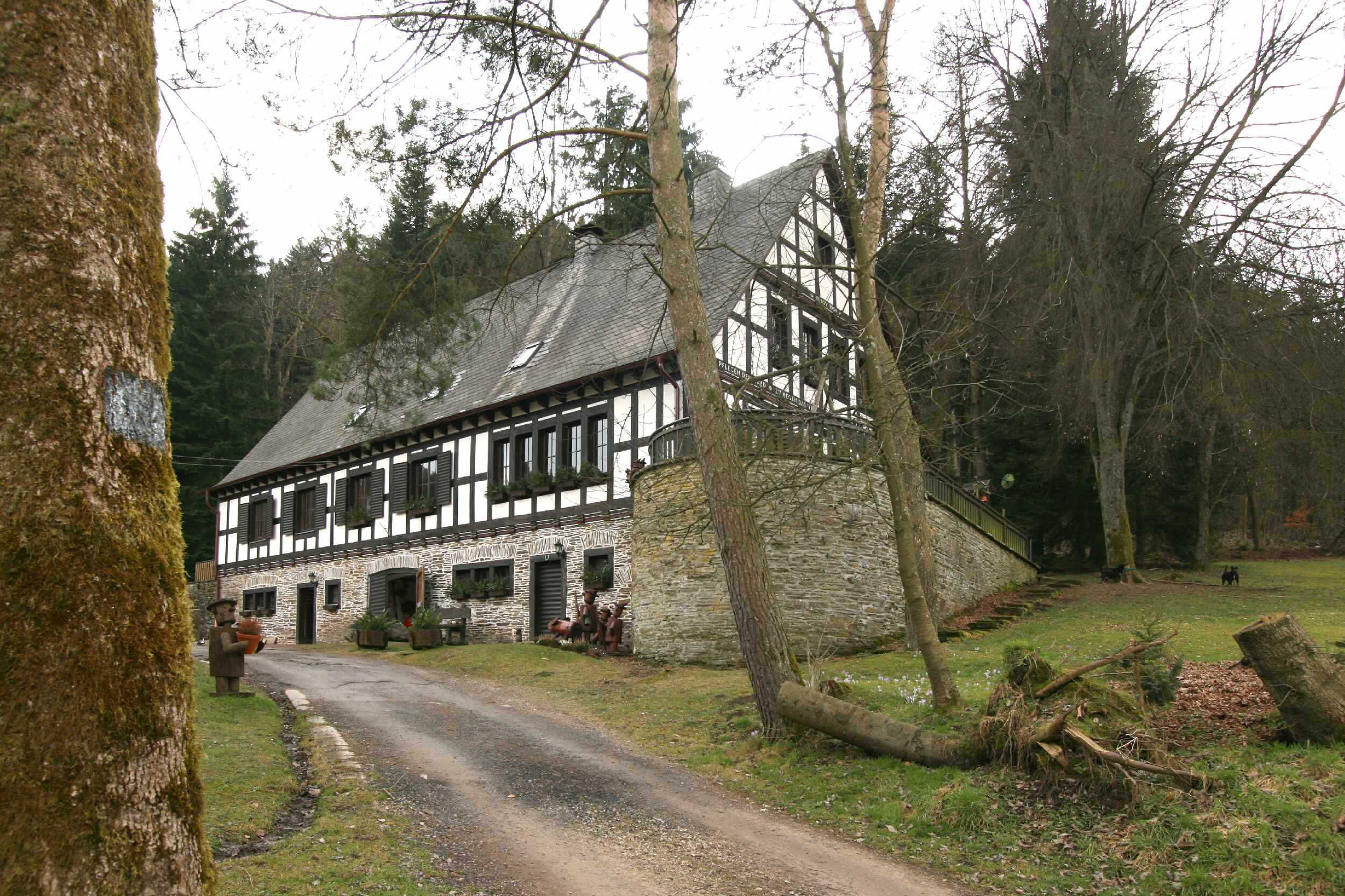|
Ehlscheid
Ehlscheid is a municipality in the district of Neuwied, in Rhineland-Palatinate, Germany. Part of the municipality are also three ', namely Forsthaus Gommerscheid, Hof Talblick and Talhof. (''Forsthaus'' may be translated as forester's lodge, ''Hof'' (in that case) as homestead). On June 1, 1958, an open-air bath was opened in Ehlscheid. It was closed in 2012 due to technical problems. In 2016, the pool was leveled and filled with earth. The Rockefeller family has its roots in Ehlscheid, but also in the abandoned village of Rockenfeld and in Fahr (both today part of Neuwied Neuwied () is a town in the north of the German state of Rhineland-Palatinate, capital of the District of Neuwied. Neuwied lies on the east bank of the Rhine, 12 km northwest of Koblenz, on the railway from Frankfurt am Main to Cologne. Th ...). References Neuwied (district) {{Neuwied-geo-stub ... [...More Info...] [...Related Items...] OR: [Wikipedia] [Google] [Baidu] |
Neuwied (district)
Neuwied () is a district (''Kreis'') in the north of Rhineland-Palatinate, Germany. Neighboring districts are (from north clockwise) Rhein-Sieg, Altenkirchen, Westerwaldkreis, Mayen-Koblenz, Ahrweiler. History The district was created in 1816 when the area became part of the Prussian Rhine province. In 1822 the district Linz was merged into the district. The district has a partnership with the Polish county Namysłów in Opole Voivodeship; first contacts date to 1998 and the partnership became official in 2000. Geography The districts landscape covers the Westerwald mountains, east of the Rhine river valley. The Rhine forms the western boundary of the district. Coat of arms The crosses in the top represent the two clerical states which owned part of the district - the black cross of Cologne in the left, the red cross of Trier in the right. The peacock in the bottom is taken from the coat of arms of the Counts of Wied. Towns and municipalities ''Verband''-free town: Neuwied ... [...More Info...] [...Related Items...] OR: [Wikipedia] [Google] [Baidu] |
Rhineland-Palatinate
Rhineland-Palatinate ( , ; german: link=no, Rheinland-Pfalz ; lb, Rheinland-Pfalz ; pfl, Rhoilond-Palz) is a western state of Germany. It covers and has about 4.05 million residents. It is the ninth largest and sixth most populous of the sixteen states. Mainz is the capital and largest city. Other cities are Ludwigshafen am Rhein, Koblenz, Trier, Kaiserslautern, Worms and Neuwied. It is bordered by North Rhine-Westphalia, Saarland, Baden-Württemberg and Hesse and by the countries France, Luxembourg and Belgium. Rhineland-Palatinate was established in 1946 after World War II, from parts of the former states of Prussia (part of its Rhineland and Nassau provinces), Hesse (Rhenish Hesse) and Bavaria (its former outlying Palatinate kreis or district), by the French military administration in Allied-occupied Germany. Rhineland-Palatinate became part of the Federal Republic of Germany in 1949 and shared the country's only border with the Saar Protectorate until the latter wa ... [...More Info...] [...Related Items...] OR: [Wikipedia] [Google] [Baidu] |
Germany
Germany,, officially the Federal Republic of Germany, is a country in Central Europe. It is the second most populous country in Europe after Russia, and the most populous member state of the European Union. Germany is situated between the Baltic and North seas to the north, and the Alps to the south; it covers an area of , with a population of almost 84 million within its 16 constituent states. Germany borders Denmark to the north, Poland and the Czech Republic to the east, Austria and Switzerland to the south, and France, Luxembourg, Belgium, and the Netherlands to the west. The nation's capital and most populous city is Berlin and its financial centre is Frankfurt; the largest urban area is the Ruhr. Various Germanic tribes have inhabited the northern parts of modern Germany since classical antiquity. A region named Germania was documented before AD 100. In 962, the Kingdom of Germany formed the bulk of the Holy Roman Empire. During the 16th ce ... [...More Info...] [...Related Items...] OR: [Wikipedia] [Google] [Baidu] |
Statistisches Landesamt Rheinland-Pfalz ...
The statistical offices of the German states (German: ''Statistische Landesämter'') carry out the task of collecting official statistics in Germany together and in cooperation with the Federal Statistical Office. The implementation of statistics according to Article 83 of the constitution is executed at state level. The federal government has, under Article 73 (1) 11. of the constitution, the exclusive legislation for the "statistics for federal purposes." There are 14 statistical offices for the 16 states: See also * Federal Statistical Office of Germany References {{Reflist Germany Statistical offices Germany Germany,, officially the Federal Republic of Germany, is a country in Central Europe. It is the second most populous country in Europe after Russia, and the most populous member state of the European Union. Germany is situated betwe ... [...More Info...] [...Related Items...] OR: [Wikipedia] [Google] [Baidu] |
Forester's Lodge
A forester's lodge, forester's house or forester's hut is the residence of a forester, usually one who is in charge of a forest district. History Woodcutters' huts are as old as forestry itself. To begin with, temporary accommodation was usually built for the clearing of areas of forest, but they became more permanent in the High Middle Ages in Europe as more and more timber was felled for mining, saltworks, shipbuilding and firewood, in order to reduce the distance from home to workplace. The foresters could remain in an area of timber felling for weeks. With the development of forestry rights, the profession of foresters emerged and so the forester's lodge became a place of work. In some cases, large forester's estates were created. Usually forester's houses are solid, brick-built structures that are often permanently occupied, for example as forestry administrative offices, and usually in or near settlements, while forester's huts are less well built, simpler shelters and ov ... [...More Info...] [...Related Items...] OR: [Wikipedia] [Google] [Baidu] |
Homestead (buildings)
A homestead is an isolated dwelling, especially a farmhouse, and adjacent outbuildings, typically on a large agricultural holding such as a ranch or station. In North America the word "homestead" historically referred to land claimed by a settler or squatter under the Homestead Acts (USA) or Dominion Lands Act (Canada). In Old English the term was used to mean a human settlement, and in Southern Africa the term is used for a cluster of several houses normally occupied by a single extended family. In Australia it refers to the owner's house and the associated outbuildings of a pastoral property, known as a station. See also * Homestead principle * Homesteading * List of homesteads in Western Australia * List of historic homesteads in Australia * Settlement hierarchy A settlement hierarchy is a way of arranging settlements into a hierarchy based upon their population or some other criteria. The term is used by landscape historians and in the National Curriculum for E ... [...More Info...] [...Related Items...] OR: [Wikipedia] [Google] [Baidu] |
Rockefeller Family
The Rockefeller family () is an American industrial, political, and banking family that owns one of the world's largest fortunes. The fortune was made in the American petroleum industry during the late 19th and early 20th centuries by brothers John D. Rockefeller and William A. Rockefeller Jr., primarily through Standard Oil (the predecessor of ExxonMobil and Chevron Corporation). The family had a long association with, and control of, Chase Manhattan Bank.''The Political Economy of Third World Intervention: Mines, Money, and U.S. Policy in the Congo Crisis'', David N. Gibbs, University of Chicago Press 1991, page 113 By 1977, the Rockefellers were considered one of the most powerful families in American history.''The Rockefeller inheritance'', Alvin Moscow, Doubleday 1977, page 418 The Rockefeller family originated in Rhineland in Germany and family members moved to the Americas in the early 18th century, while through Eliza Davison, with family roots in Middlesex County, Ne ... [...More Info...] [...Related Items...] OR: [Wikipedia] [Google] [Baidu] |
Rockenfeld
Rockenfeld is an abandoned village in the Neuwied (district), Neuwied district of Feldkirchen, Neuwied, Feldkirchen, Germany. Geography The abandoned village Rockenfeld lies at 330 m above sea level on a mountain range rising from north to south between the valleys of the river ''Rockenfelder Bach'' in the west and a tributary of the ''Nonnenbach'' in the east. The ''Forst Wied'' borders to the east. The only road connection is Kreisstraße 1, which leads down to Rheinbrohl over a length of eight kilometres into the Rhine Valley. History The village was first documented in 1280 as Rukenvelt. Until 1693, it belonged to (today part of Feldkirchen). In 1846, 11 families lived in the village; starting from 1885, an official school was established, which was closed again in 1935. At the end of World War II, 50 people still lived in Rockenfeld. Due to constant emigration, the local council decided to dissolve the community in 1965. In 1969, the abandoned houses and courtyards were ... [...More Info...] [...Related Items...] OR: [Wikipedia] [Google] [Baidu] |
Neuwied
Neuwied () is a town in the north of the German state of Rhineland-Palatinate, capital of the District of Neuwied. Neuwied lies on the east bank of the Rhine, 12 km northwest of Koblenz, on the railway from Frankfurt am Main to Cologne. The town has 13 suburban administrative districts: Heimbach-Weis, Gladbach, Engers, Oberbieber, Niederbieber, Torney, Segendorf, Altwied, Block, Irlich, Feldkirchen, Heddesdorf and Rodenbach. The largest is Heimbach-Weis, with approximately 8000 inhabitants. History Near Neuwied, one of the largest Roman ''castra'' on the Rhine has been excavated by archeologists. Caesar's Rhine bridges are believed to have been built nearby. Neuwied was founded in 1653 by Count Frederick III. of Wied, initially as a fortress on the site of the village of Langendorf, which had been destroyed in the Thirty Years' War (1618–1648). It was to serve as the new residence of the lower county, secure its only access to the Rhine and enable the small state, imp ... [...More Info...] [...Related Items...] OR: [Wikipedia] [Google] [Baidu] |





